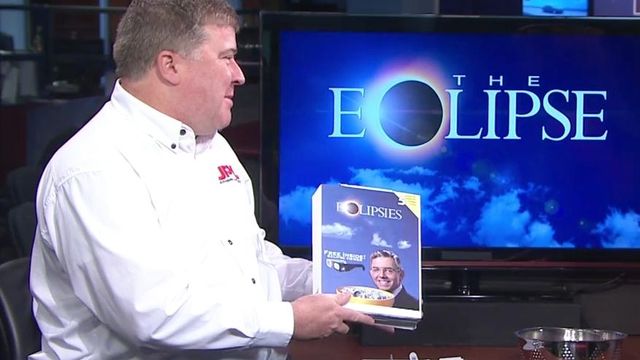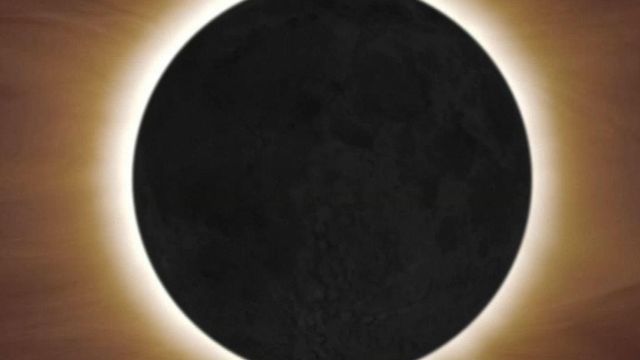Can't find eclipse glasses? No need to panic! 3 alternatives to experience the eclipse
There's been an enormous demand for those glasses. And, this week, people across the Triangle and the country are scrambling to pick up a pair.
Posted — UpdatedBut, there's been an enormous demand for those glasses. And, this week, people across the Triangle and the country are scrambling to pick up a pair. Stores, museums and website are sold out. And some, who planned ahead, are left with counterfeit glasses, which don't comply with industry or safety standards. (My family was among the unlucky ones. Amazon issued a refund for the glasses we purchased last week).
But, never fear: If you don't have a pair of glasses, you can still experience the eclipse on Monday. The Triangle is not in the path of totality, but we will enjoy a partial view next week.
Here are three ways to experience it without eclipse glasses:
My friend remembers making one of these decades ago as a child to catch a view of an eclipse. And this DIY project is still a great way to check it out if you don't have glasses.
Amy Sayle, the resident eclipse expert at the Morehead Planetarium and Science Center in Chapel Hill, agrees.
There is no need to miss out," wrote Sayle in an email. "There are other easy, safe, and cheap-to-free methods to view the eclipse - via pinhole projection."
The pinhole projector is simple to make. All you need is two pieces of white cardstock, aluminum foil, a thumbtack and tape. With the viewer, you can project a view of the eclipse onto the ground or other surface.
"You can't use it to look directly at the eclipse," Pepple said. But it's an easy way to take in the event.
If you're not feeling especially confident in your pinhole viewer crafting and using, the Museum of Life and Science in Durham will host an eclipse event from 9:30 a.m. to 4 p.m., Monday, which includes a chance to make your own pinhole viewer and use it with the guidance of museum staff.
The event and the supplies needed to make the pinhole viewer are free with admission, which is $18 for adults and $13 for kids ages 3 to 12. Eclipse activities are planned all day, but a viewing area will be set up on the concrete plaza of the museum's butterfly house from 2:30 p.m. to 2:45 p.m.
The museum also will host a free viewing party from 1 p.m. to 4 p.m., Monday, at Blackwell Street Plaza in downtown Durham. Here, visitors will have a chance to make their own pinhole viewers - for free. Families are welcome, but the event is geared more to adults.
Also at the Museum of Life and Science, the museum will have two solarscopes, which project a large image of the sun using a series of mirrors and lenses. They are similar to a pinhole viewer, but at a much larger scale.
“This is a great option for viewing the eclipse together as a family, especially if you have been unable to secure a pair of eclipse glasses,” said Karyn Perdue, education program manager for the museum's The Lab. “Solarscopes actually allow you to see the sun in greater detail. You can often make out sunspots on the surface and since the image is projected onto a screen, your field of view includes the entire sun.”
And, at N.C. State's event, they'll have a telescope with a solar filter for safe viewing.
The N.C. Museum of Natural Sciences in Raleigh will feature a video call from the path of totality in Sylva, N.C., with museum astrophysicist Dr. Rachel Smith. The live video link inside the Daily Planet Theater will give museum visitors the opportunity to see the moon cover 100 percent of the sun. The live stream will run from 2 p.m. to 3 p.m., Monday. It's free to watch.
Related Topics
• Credits
Copyright 2024 by Capitol Broadcasting Company. All rights reserved. This material may not be published, broadcast, rewritten or redistributed.






